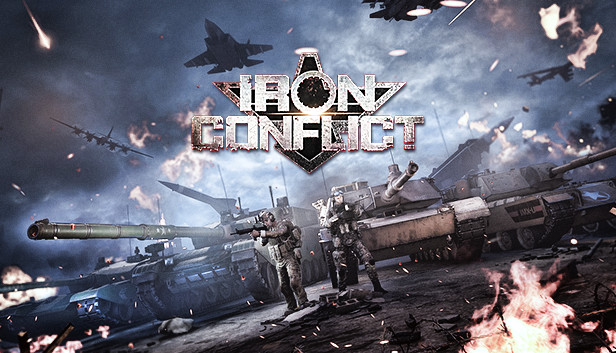For Iron Conflict players, this guide provides a basic overview of the different types of artillery and missile launchers available in Iron Conflict.
Introduction
In Iron Conflict, players choose from several different unit types to create formations. Each unit type has its own special characteristics, strengths, and weaknesses. By combining different types of units together, players can create well-rounded formations with units that complement one another effectively. They must also coordinate with their teammates to ensure that the team as a whole is able to deal with the challenges they face on the battlefield.
In this overview, we’ll be looking at artillery and missile launchers, and where their strengths and weaknesses lie.
Anti-Air Cannons
Defense: ★★☆
Mobility: ★★★
Ground Visual Range: ★★
Air Visual Range: ★★★★
Concealment: ★★★Summary:
1. These artillery are primarily defensive in nature. They can keep your airspace clear of pesky aircraft threatening your other units.
2. Proper positioning of these artillery will help you get a good view of the air and a decent lay of the land.
3. These artillery have poor Mobility and are not good at pursuing enemy aircraft that are fleeing.
4. These units can also be used in a pinch to attack ground units. While weak against units with heavy armor, their persistent rate of fire can be lethal to infantry and light armored units.
5. These units can be used to provide backup to your heavy tanks and keep them safe from enemy aircraft, especially bombers.
Artillery
Defense: ★★
Mobility: ★★☆
Ground Visual Range: ★★
Air Visual Range: ★★
Concealment: ★★Summary:
1. These units are generally used to provide medium-range support to your other units.
2. These units are very effective against units with units with lots of armor like heavy tanks, but their line-of-sight is easily obstructed by terrain and buildings, so it’s best to position them on high ground.
3. These units have a certain amount of Mobility, and are able to effectively support advancing friendly units.
4. Keep your artillery a safe distance from the front line and conceal them near woods or obstacles that can be used to escape in case enemies advance on your artillery’s position.
Surface-to-Air Missile Launchers
Defense: ★☆
Mobility: ★★
Ground Visual Range: ★★
Air Visual Range: ★★★★
Concealment: ★★Summary:
1. Similar to anti-air cannons, these units are primarily used for air defense.
2. Surface-to-air missile launchers have longer range and increased damage compared to anti-air cannons.
3. While mobile, these launchers cannot attack. While in launch mode, they cannot move. Switching between modes takes a few seconds, so make sure you’re not vulnerable when you do so.
4. Guided missiles take a certain amount of time to lock onto their targets, and interval between launches is relatively long.
5. These units are not able to attack ground units, so they are best placed away from the front lines.Their Air Visual Range is quite strong, however recon units can also be quite helpful in getting a bead on enemy aircraft.
Surface-to-Surface Missile Launchers
Defense: ★☆
Mobility: ★★
Ground Visual Range: ★★
Air Visual Range: ★★
Concealment: ★★Summary:
1. These missile launchers excel at long-distance firepower support for your other ground units.
2. These units can fire over long ranges, dealing high amounts of damage over a large area. They also relatively unhindered by terrain and buildings. However, they take a long time to aim and reload, so they must be fired carefully.
3. These units should be kept far away from the front lines. Use your recon units to spot enemies for them to take out.
Conclusion
When using artillery and missile launchers, it is critical to ensure that these units are kept a safe distance away from enemy units and are adequately protected. As they have very few effective means of defending themselves, they are vulnerable to enemy sneak attacks.
Here is a quick reference chart:

